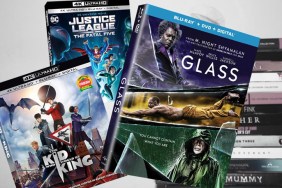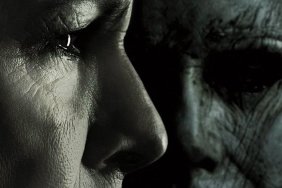We haven’t seen I, Frankenstein yet, but somehow we suspect it’s in no danger of being declared “The Best Frankenstein Movie Ever.” Which only begs the question… what is?
Frankenstein’s monster is one of the most indelible characters in literature, and certainly – thanks to Universal’s early Frankenstein movies – one of the most recognizable in film. The concept of a scientist creating life itself, only to discover that life cannot be controlled, is a dramatically powerful one that’s spawned many literal adaptations of Mary Wollstonecraft Shelley’s original novel and countless figurative ones. We could do a Top 50 list very easily, but that would be cheating. Instead, CraveOnline‘s film critics – joined this week by Shock Till You Drop‘s Ryan Turek – are going to decide once in the latest Best Movie Ever.
Witney Seibold:

I’m not exactly sure how it happens, but Frankenstein – like Dracula, Godzilla, King Kong, and a select few other movie characters – somehow make their way into the public consciousness through no effort of their own. Little kids know about Frankenstein’s monster sometimes before they’re even toilet trained. I didn’t see James Whale’s 1931 film Frankenstein until I was a teenager, and I didn’t read Mary Shelley’s famed 1818 novel until I was in my 20s, but Frankenstein’s monster was always with me. I cannot think of the moment I was introduced to him. As such, I will have to select – as the best Frankenstein movie ever – the film that represents that pure version of Frankenstein. The one we somehow learned about in utero. And in my mind there is no contest.
While James Whale’s 1931 film is the iconic movie that introduced the world to the monster, it was his follow-up 1935’s Bride of Frankenstein, that is handily the best. Yes, I know I’m skewing a bit obvious, but there’s a reason for that: it’s still the best. Bride of Frankenstein has everything you would want in a horror film. It has a cool story (based a tad more closely on Shelley’s original than the 1931 version), over-the-top characters (Ernest Thesiger’s camp performance as Dr. Pretorius should not be missed), a sympathetic monster (Boris Karloff is still the king of this role), awesome special effects (in addition to the iconic makeup, the homunculi scene is impressive by any standards), and the ultimate creation of everyone’s favorite Goth girl icon, The Bride (the pretty, doe-eyed Elsa Lanchester, who also played Mary Shelley in the film’s introduction).
Everything you know about Frankenstein, you learned from this movie. Everything spoofed in Young Frankenstein came from this film. It’s brisk, energetic, and actually scary at times (the monster is still a weird and off-putting thing; the way the monster ought to be). So while I love camp-fests like Frankenhooker, and I feel that Toho’s bizarre Frankenstein Conquers the World (a.k.a. Frankenstein vs. Subterranean Monster Baragon) deserves props, Bride of Frankenstein is still the king. Er, queen.
Fred Topel:

I thought about picking Re-Animator to be cute, but Bride of Frankenstein is pretty unimpeachable. And since I’m Franchise Fred, it makes me very happy to pick a sequel for my Best Movie Ever contribution. James Whale’s second Frankenstein film actually covers the second half of Mary Shelley’s book, and features much of what we all remember as Frankenstein.
Boris Karloff returns as the monster, with Henry Frankenstein (Colin Clive) having actually survived the finale of the original film too. In the movie, it’s Dr. Pretorius (Ernest Thesiger) who prompts Frankenstein to make another creature, this time a bride. In the novel it was the monster himself, but it works.
This is where the monster meets the blind hermit, a sequence brilliantly spoofed in Mel Brooks’ Young Frankenstein. It’s where the monster learns the single words “friend” and “good,” and Henry screams, “She’s alive! Alive!” It’s pretty brutal for 1935. The monster does kill people good, but it’s also a heartbreaking character journey where the creature tries so hard to become human and have friends, but in the end resigns himself to, “We belong dead.” This is where Whale dropped the mic and left the franchise to Karloff for Son of Frankenstein and then a slew of other filmmakers whose lives were not made into movies by Bill Condon.
Brian Formo:

I was going to select Re-Animator, as it is so much fun, but – after selecting Notorious last week for its nimble ability to skirt around the Production Code – I will select The Spirit of The Beehive for its very subtle attack on the Spanish dictator, Francisco Franco, via a small-town screening of Frankenstein.
Beehive is set in 1940, released in 1973. Franco came into power in 1939, after the Spanish Civil War, and remained in power until his death in 1975. Much like the consistent sunny glow that Beehive maintained by shooting most of the film in the “golden hour” – that magic photographic time just before nightfall – Franco was in the final years of power when this film was released.
The film opens when a visiting cinema hosts a screening of James Whale’s Frankenstein. The authorities present the film as a warning against creating godless creatures (ideologies). Loosely translated: socialism will kill your children.
Beehive has a very loose structure. It mostly concerns a fractured family of few words. A mother writes love letters to a former lover; her husband is lost in his research of bees, perhaps less aware of the buzzing political movements in the country. Their young daughters attend Frankenstein alone and unsupervised. Confused about why Frankenstein kills the little girl in the film and why the townspeople kill him, the youngest daughter asks her sister: “why?” Her sister says that Frankenstein isn’t actually dead. His spirit lives in the barn adjacent to their home.
When Ana, the youngest sibling, goes to the barn she discovers a wounded Republican soldier. Thinking the solider to be a new physical form of Frankenstein, she keeps him secret and provides food and gifts.
Unlike a hive, Beehive is quiet and unsweet. Though the imagery (from cinematographer Luis Cuadrado, who was going blind during production) is sublime throughout, it’s the expressions of a very young Ana Torrent that makes this film remarkable. While the adults sit in dread, unable to communicate, Anna (and director Victor Erice) sustains the life of a “monster” and – thereby – a counter-idea for a country.
William Bibbiani:

The obvious answer is Bride of Frankenstein. But that is also the wrong answer. I love the movie too, and heaven knows it’s got no shortage of smart ideas and meaningful pathos, but I stand by James Whale’s original Frankenstein as the superior Universal Horror movie based on the Mary Wollstonecraft Shelley’s allegorical monster, if only for its narrative clarity. If we have to pit the two against each other (and we only have to because we’re critics, the rest of you can simply let it be), I would have to say that Bride of Frankenstein meanders a bit more. That is all.
But I actually do think that we’ve done better in the decades that followed when in comes to Frankenstein movies, if only metaphorically. Shelley’s 1818 novel became a permanent cultural icon because it captured a concept rife with dramatic possibilities: science, increasingly all the rage, runs amok and forces the scientists to admit their humility, or at least be taken to task for their hubris. You could argue very easily that The Terminator (and certainly Terminator 2) is a Frankenstein movie. You could say the same about The Bourne Identity if you really think about it. But I would argue that no film has done a finer job of transferring the Frankenstein concept to the modern age – still – than Paul Verhoeven’s absurdly titled 1987 science-fiction classic Robocop.
Working class cop Alex Murphy (Peter Weller) lives in a near-future Detroit where the police have been privatized, run by a corporation called Omni Consumer Products (OCP). So when he dies in the line of duty – in one of the most devastating death scenes ever captured on camera – they own his corpse, and reanimate it into the prototype for a new, cybernetic police officer. Verhoeven initially lets the film play out like audiences thought it would, complete with action spectacles and camp nonsense (the parody commercials are still a treat), but soon the film’s message takes over, and forces Alex Murphy to reclaim his identity as a human being, not a product. “What’s your name, son?”
Robocop submits that in the now rampantly capitalistic world we live in, that a Frankenstein monster needs more than companionship to validate its existence, it needs freedom. When every scientific discovery comes complete with a patent and a profit expectation, then human recipients of those scientific advancements – including you and me – need to be vigilant not to to let contemporary Dr. Frankensteins use their discoveries to find new ways to own us, instead of improving our lives. Think about that the next time you skip the legal warnings on your iPhone updates.
Ryan Turek:

The greatest Frankenstein movie ever? Easy. The Bride of Frankenstein. But I’m not here to talk about that. I’m here to upset the balance of this column.
I’m the guy with the Frankenstein tattoo (seriously, I have a stitch that goes around my write akin to Karloff’s representation of the monster) and the Frankenstein mythos is a favorite of mine. Over the many years as a horror fan who talks, sweats and bleeds the genre, I’ve seen good takes on the Mary Shelley tale, awful interpretations (Dean Koontz’s Frankenstein), meandering adaptations (anything made-for-TV), funny adaptations (hello, Weird Science!) and just plain weird ones (Roger Corman’s Frankenstein Unbound, I’m lookin’ at you). And yes, I think The Bride of Frankenstein (followed by Frankenstein) is the best it’s going to get.
When this assignment crossed my desk, however, I immediately thought of a contemporary Frankenstein tale that did so much right and yet did so much wrong… in many ways.
That movie is Splice, by Canadian filmmaker Vincenzo Natali – best known for his bloody sci-fi film Cube. With Splice, Natali put his stamp on the Frankenstein mythos by telling the story of two famous geneticists Clive and Elsa (names that are a nod to Frankenstein actor Colin Clive and Bride of Frankenstein’s Elsa Lanchester) played by Adrien Brody and Sarah Polley, respectively. This pair screw around with the laws of science and play God. They merge animal DNA, add a little extra somethin’-somethin’ to the batter (no spoilers here!) and create a creature named Dren (hot-as-hell Delphine Chanéac who undergoes a startling transformation).
Splice thematically hits all of the beats we’re accustomed to from a Frankenstein story, also, it’s not often you see the Frankenstein monster getting it on with its own creators! The film is uncomfortable, thought-provoking, modern and fascinating, even if it’s not entirely successful. For all of its flaws, though, Splice cannot be ignored and any Frankenstein fan worth his or her salt should give it a look.








